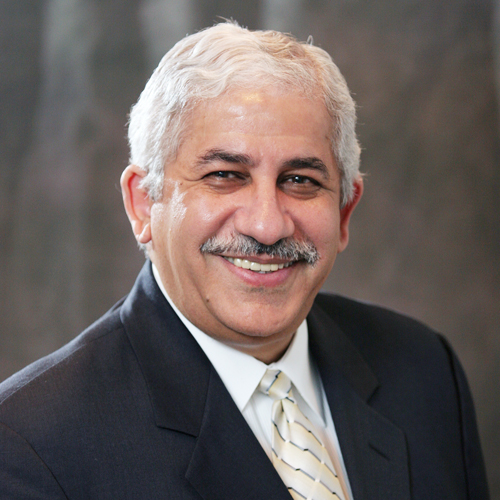A self-confessed math lover, Anita Herrera was a certified public accountant in Philadelphia in her “first life,” and was always fascinated by the financial markets. After she graduated from law school, Herrera returned to her hometown of Washington, DC, ready for any opportunity to grow her legal expertise. Every day on the way to the gym, she would walk by the Commodity Futures Trading Commission (CFTC) building and her interest in the complexities of market trading was piqued.
“At the time I knew nothing about the futures markets, but an interesting opportunity presented itself,” Herrera says. “One night at a networking event, I met an attorney who worked at the CFTC and told me that there was an opening for a trial attorney. I decided to apply, and got the job.” She started her legal career with the CFTC in 1994.
The move to the commodity futures industry proved to be fortuitous because the early 1990s was a time when new financial transactions—known as swaps and derivatives—were having a profound impact on the work being done at the CFTC. Herrera was able to use her in-depth accounting background to take off running with precedent-setting cases and new issues that were evolving in her new industry.
“In early 1994, [Alan] Greenspan and the Federal Reserve raised interest rates after a long period of steady rates, which resulted in losses for many interest rate swaps held in companies’ portfolios. These transactions were heavily leveraged, complicated, and unregulated. The financial institutions selling these products were making a lot of money, and as long as interest rates stayed flat, no one was paying attention to the impact of leverage on the extent of potential losses on these swaps if interest rates were to go up,” Herrera explains.
One such case was the CFTC case against Bankers Trust, which was based on swaps losses at Gibson Greetings. Herrera was heavily involved in developing the case, coordinating with staff and interacting with several regulators, including the securities and exchange commission (SEC) who cofiled the case with the CFTC. Her contributions laid the foundation for a top-level legal career in derivatives and commodity futures.
Inside Nodal
The Nodal Exchange, launched in 2009, is an electronic platform for trading energy futures contracts, especially in the electricity markets in North America. Nodal provides price, credit, and liquidity risk management solutions. Up until its launch, electricity had not been a significant focus for futures trading because, unlike other commodities, electricity cannot be stored in a meaningful way but must be available on-demand. Herrera explains that when electricity is generated, it immediately flows through the transmission wires to be consumed. Thus, electricity cannot be generated to be stored for moments of peak demand.
“An electricity generator wants to know that it will be able to cover costs, but often doesn’t know how much electricity will be needed, as demand and price will fluctuate due to weather,” she says. “Futures contracts enable participants to lock in the price of the commodity at a given point in the future. So, Nodal Exchange’s futures contracts provide a mechanism to lock in a price that will cover a generator’s costs regardless of demand or price fluctuations. This is just one of many ways that the futures contracts on Nodal Exchange can help electricity industry participants.”
“The unique nature of Nodal Exchange is that it is very focused on meeting the needs of the US energy industry.”
Anita Herrera
In a more general sense, Nodal Exchange offers the world’s largest set of electricity power locational futures contracts. It has grown to become a significant part of the North American power market and has proven excellence in energy risk management. In 2013, Nodal Exchange was named “Exchange of the Year” by Energy Risk Magazine. It is a privately held company by investors in the energy industry, such as NextEra Energy Resources, Macquarie Energy, and DC Energy. Nodal also offers futures contracts on natural gas.
Herrera goes on to explain: “Nodal Exchange offers participants the ability to trade electricity and natural gas futures contracts that are cleared and settled by its subsidiary, Nodal Clear.” This means that Nodal Clear ensures payments on both sides of the transactions so that participants on Nodal Exchange do not have to concern themselves with the creditworthiness of whatever company might be on the other side of the trade. “The unique nature of Nodal Exchange is that it is very focused on meeting the needs of the US energy industry,” she says.
The Role of Compliance
A typical day for Herrera includes numerous meetings and consultations with coworkers to address legal and regulatory matters while supporting the continued growth of Nodal. In addition, Herrera often interacts with regulators, including the CFTC.
Herrera’s regulatory role is to make sure that Nodal Exchange is in compliance with CFTC regulations. This involves keeping employees aware of how their jobs play an important role in keeping the Exchange in compliance with the CFTC and other regulators.
Herrera also must manage compliance by the traders who are participants on Nodal Exchange. “Nodal has rules to ensure that it is providing a competitive and financially sound market,” Herrera says. “Our compliance department consists of a surveillance team that is constantly monitoring trading and compliance management, that investigates unusual trading behavior and potential violations of the rules.”
Industry Thoughts
Considering the financial industry as a whole, Herrera notes that Nodal Exchange has fostered competition for the types of electricity futures contracts that it offers.
“We are providing a mechanism for energy participants—the entities that supply electricity to the country—to have a means to hedge their requirements,” she says. “And by doing so, Nodal Exchange also provides those that are willing to take on that risk an opportunity to make money. In fact, many of these entities are financial institutions that bring liquidity to these markets. Liquidity reduces risk and that is a good thing.”
Looking ahead, Herrera predicts that because electricity markets will continue to evolve and grow, both energy and financial participants will derive financial benefits and gains from trading the contracts offered by Nodal Exchange.
“As we continue to offer a growing portfolio of products, we expect to see significant growth. I anticipate seeing a surge in the next two to three years.”
Nodal Exchange has already seen impressive growth since its relatively recent launch, and thanks to the legal prowess of its general counsel and chief regulatory officer, the Exchange is becoming a leading market in the industry. “Nodal is innovative and nimble, and strives to be responsive to our participants, providing them with what they need to manage their risks effectively,” Herrera says.

